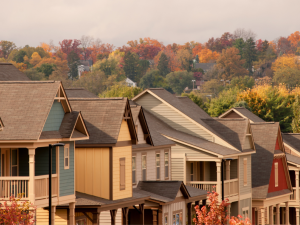What makes CMA different?
If your community is considering a new community association management company, as the leader in association management throughout the southeast, Community Management Associates may be the solution your association has been searching for. Our core values of loyalty, integrity, trust, mutual respect, and professionalism have helped us become trusted leaders in the industry. Client satisfaction is our primary objective, and we are willing to go the extra mile for all our valued customers. We actively participate in the communities we serve to make a difference from within. Choose CMA and get the level of service your community deserves.
Unmatched expertise!
CMA belongs to several chapters of the Chamber of Commerce, the Community Associations Institute in Georgia, Florida, Tennessee, and Alabama, and many other licensing organizations in the southeast. Our community association managers meet or exceed the state licensing and certifications requirements in every state we serve. They have the professional skill set to help communities thrive. The PCAM designation is awarded to the top managers that specialize in community association management. CMA is proud to hold the highest number of PCAMs of any association management company in the region. Our experienced managers have advanced skills to tackle any situation that comes their way. We make it a point to assign communities to managers based on geographical proximity so the community receives the best possible service and our managers spend less time in traffic!
How do we ensure excellence?
CMA hires talented state licensed community association manager professionals who are willing to innovate. We focus on the combined strengths of the team as a whole, allowing everyone to share their new ideas and initiate valuable collaborations. Not only will your community have access to your assigned association manager, but each community association manager is also supported by our client services team and a supervising manager to assist residents and board members as needed. CMA also offers after-hours emergency call service to handle emergency calls during non-business hours. CMA is always available for your community. We are always looking for inventive, highly motivated professionals interested in community association management to join our team. Find your career with CMA.
We offer a wide range of services!
One of our main strengths at CMA is that we offer customizable service solutions to meet the unique needs of each community. Whether your community needs full service with concierge staff, financial only or developer management through the turnover process, CMA can customize a solution for you. We know that every association has its distinctive characteristics, and we want to preserve those details and character. We strive to ensure that you are proud of your home and community by offering a wide range of services. Whether you need help for property management in Atlanta, August, Birmingham, Nashville, Destin, Santa Rosa, or Naples, we are always here for you. Our customer service is ready to answer your calls. Some of our popular services include:
We help Homeowners Associations operate smoothly so they can maximize their resources and keep the community financially secure.
Training for new board members.
Our team of talented managers will be able to gauge the needs of the community preemptively. CMA will handle all communication efficiently to ensure that your owner residents are heard.
Accurate and transparent association accounting of financial records is vital to community association management. Our in-house financial experts will provide you with 24/7 financial visibility so you know how your association funds are being handled. Newer or smaller management firms with less oversight and experience can’t provide your community with the same financial peace of mind as CMA.
We can help you with payroll, assessment collection, annual budgeting, special assessments, capital improvement loans, insurance reviews, annual contract reviews, and many other important association functions.
You can contact us here!


